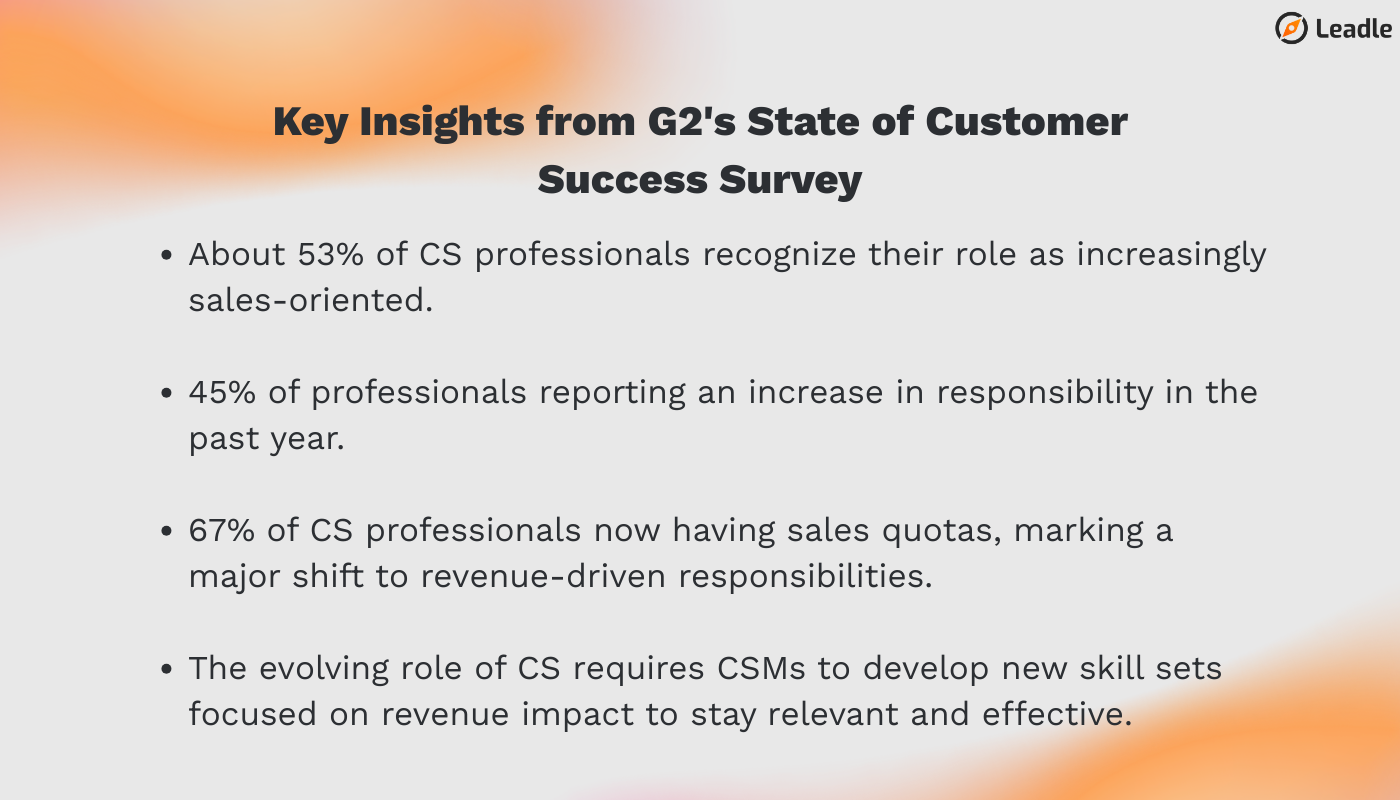Why Customer Experience Is at an Inflection Point
A few years ago, great customer experience (CX) meant quick responses and polite agents.
Today, customers expect brands to know them, instantly, across every channel.
According to Salesforce, 88% of buyers say the experience a company provides is as important as its products or services. Yet, only 38% of customers feel AI has meaningfully improved that experience.
Problem? Technology has evolved faster than most companies’ ability to use it well. Tools are everywhere - chatbots, CRMs, automation layers but the human experience behind them hasn’t caught up.
And in that gap between promise and delivery, trust erodes.
I’ve seen this firsthand while working with B2B teams across industries. The companies that consistently retain customers are the ones that stay aligned between sales, marketing, and customer success and make sure their automation still feels human.
What’s Changed: From Responsiveness to Reliability
Over the last decade, three major shifts have redefined how B2B companies think about customer experience.
1. Speed is now survival
The bar for responsiveness has collapsed.
Where once a 48-hour turnaround was acceptable, today even enterprise clients expect real-time updates and resolution visibility.
Platforms like HubSpot and Intercom have normalized this, setting new expectations not just for startups, but for entire industries.
Speed communicates care, delays communicate indifference.
2. Personalization isn’t optional anymore
In the age of data visibility, customers assume you know their context.
In B2B, that means remembering their past interactions, the KPIs they care about, and even their upcoming renewal dates.
According to McKinsey, 71% of customers now expect personalized interactions and 76% get frustrated when it doesn’t happen.
Data now enables this at scale.
But more than access; it’s about using the right data at the right time.
3. CX is everyone’s job
The best B2B teams I’ve seen no longer treat CX as post-sales support. It’s baked into the sales narrative, into marketing copy, into delivery metrics.
When customers say “great experience,” they usually mean, “Everyone I spoke to seemed to know what was going on.”

Also Read: How to Implement Social Selling To Build Relationships That Convert?
What’s Changing: How Automation Is Reshaping CX
Automation has become the backbone of how teams deliver consistency.
But the most successful B2B companies aren’t using automation to make things easier – they’re using it to make sure nothing important gets missed.
Here’s how that’s showing up:
💡Unified visibility across functions
When marketing, sales, and CX share the same customer data, the hand-offs get cleaner.
A single view of the customer reduces internal confusion and customers feel that clarity.
Platforms like Gainsight and HubSpot Service Hub have made it possible for success managers to act on early signals before they turn into escalations.
💡Proactive over reactive service
In the past, CX teams waited for tickets. Now, predictive analytics can flag accounts at risk based on declining engagement, low product usage, or negative sentiment.
That means reaching out before the customer has to chase you.
💡Automation as alignment glue
Automation now holds teams accountable to the promises they make.
If a deal is closed with certain outcomes attached, CX gets notified automatically.
If an NPS dips or usage drops, sales gets visibility.
The system ensures no one is “surprised” when churn happens because the signs were visible all along.
When automation connects intent, delivery, and feedback, you get a living CX loop – one that learns and adapts continuously.
What Hasn’t Changed: The Human Core of CX
All the dashboards in the world won’t save you if your customers stop believing you care.
In B2B, we think clients leave over results. 70% of clients do.
But 30% still leave despite great results because of uncertainty or lack of effort to nurture the relationship that won them over in the first place - when communication slows down, when updates stop or when they are purely transactional or when accountability becomes an option.
Trust is earned in three key moments: when things start, when things go wrong, and when
things end.
Here’s what the best CX cultures do differently:
→ They communicate early, especially when the news isn’t good.
→ They own problems publicly inside teams, so customers never have to escalate.
→ They track sentiment and act before silence turns into frustration.
Even in enterprise software, where contracts run into six or seven figures, most client churn starts with silence.
Not failure – silence.
Transparency and communication still decide whether customers renew, refer, or move on.

How to Keep Customer Relationships Alive and Sustainable
The hardest part of CX isn’t onboarding. It’s staying relevant after the initial win. Wouldn’t you agree?
A few missed updates. A delayed response.
A misleading assumption that “if there’s a problem, they’ll reach out.”
That’s how good partnerships die - purely from neglect.
Keeping relationships alive is about staying visible long after the invoice is paid.
Here’s what works, consistently:
🎯Proactive check-ins. Not quarterly business reviews – real conversations. A five-minute call that says, “We noticed usage dropped this month. Anything we can help with?”
🎯Share progress before it’s asked for. Even a short note on recent outcomes reminds customers they’re seen.
🎯Own mistakes early. When things go wrong, silence kills faster than the error itself. Quick transparency rebuilds credibility.
🎯Humanize automation. Use tools to remind, not replace. The nudge matters – the tone matters more.
Customer experience isn’t measured only by how often you talk.
It’s measured by how reliable you feel when you do.
Sustainability = CX Consistency
At Leadle, we’ve built our internal CX philosophy around one idea:
Automation should protect relationships, not replace them.
Our systems run in the background, ensuring care doesn’t get lost in busyness:
Our systems do three things:
✅Predict churn early.
We track engagement, sentiment, and campaign responsiveness.
When an account shows signs of drop-off, the system alerts our team to step in with context – not panic.
✅Automate NPS and referrals.
Every positive interaction triggers a referral request or feedback survey.
Every neutral one signals a chance to improve. No opportunity for appreciation or recovery is lost.
✅Keep alignment visible.
Marketing, sales, and delivery teams share one source of truth – so when promises are made, they’re kept.
Automation fails when it’s treated as a shortcut to make work easier.
Its real value lies in making sure the important things - follow-ups, appreciation, accountability, never slip through the cracks.
Final Thoughts:
Technology has changed the mechanics of customer experience, but not the morals of it.
The tools may help you move faster, but speed means nothing if you’re sprinting in the wrong direction.
Our customers still stay for the same reasons they always have.
Clarity. Honesty. Reliability.
Yes, we deliver results but that’s the baseline. What truly shapes how our customers perceive us in the long-term is the relationships we built over the years.
Today, with automation and alignment, you can deliver those values more consistently.
Because at the end of the day, customer experience isn’t a department.
It’s the daily proof that your company keeps its word.
FAQs
1. How has B2B customer experience evolved?
B2B CX has shifted from reactive support to proactive relationship management. Teams now anticipate needs using data, not just respond to issues.
2. How does automation improve customer experience?
Automation ensures no critical touchpoint is missed – from churn alerts to feedback loops, helping teams act before problems escalate.
3. What’s the link between CX and retention?
CX drives retention when customers consistently see value and feel understood. Predictive workflows and proactive outreach make this measurable.
4. Why is alignment between sales, marketing, and CX critical?
Alignment creates continuity. It ensures promises made in sales are delivered in execution – which is where most customer trust is won or lost.
5. What defines sustainable CX today?
Sustainability means building systems that catch silence before it turns into churn. Automation should protect relationships, not replace them.

.png)



